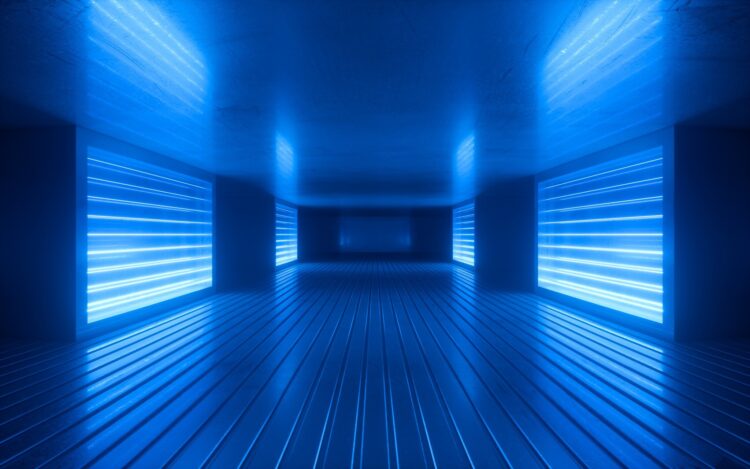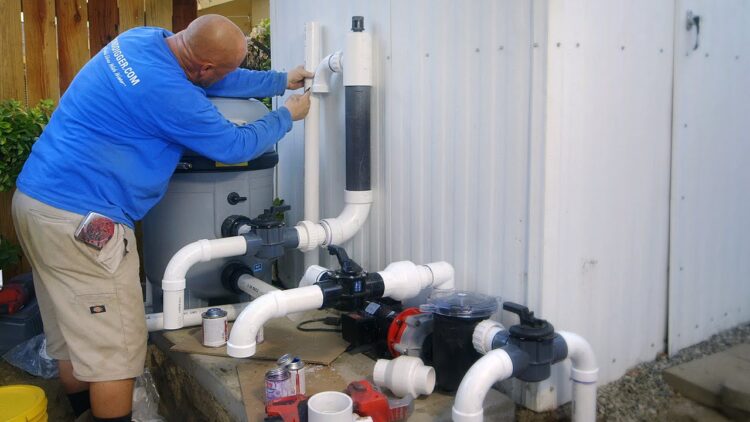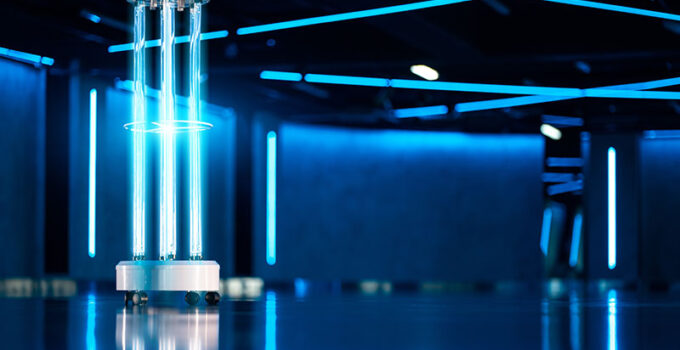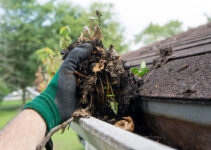The germicidal potential of ultraviolet and violet-blue light is well documented. UV sterilizer options are available for water, space, and surface sterilization and can kill up to 99.9% of pathogenic microbes. They are practical, easy to use, eco-friendly, versatile, trendy, and effective.
Various UV sterilizer devices are available for different applications, including factories, schools, homes, public transportation, and more. Users can easily find the ideal solution for their needs. Here’s an overview of the UV disinfection process and installation methods:
Page Contents
1. UV Water Disinfectant Installation
Ultraviolet light is powerful electromagnetic radiation capable of damaging DNA, RNA, and protein compounds in most microbes. The method is often used to disinfect water by killing viruses, bacteria, and parasites. UV water disinfectants feature various components, including the reactor, sleeve, control unit, and UV lamps. The unit is installed between the inlet and outlet to ensure that water passing through is sterilized using powerful UVC beams.
2. UV Space/Surface Disinfection Installation
UV light can also disinfect spaces and surfaces, including doors, knobs, walls, tables, chairs, desks, counters, kitchens, counters, and more. Pulsed Xenon UV disinfectants can be installed in fixed locations to provide autonomous sterilization for spaces and surfaces. These setups accommodate remote technology integration and work when the room is unoccupied. Space and surface UV disinfecting lamps can be installed anywhere in the room.
UV Disinfection Installation Process
There are two primary UV disinfection installation options: DIY and professionals. DIY suits people with a background in the trade, such as practicing or former UV disinfection unit installers. Those without background knowledge of UV disinfection and installation should hire a professional. Working with an experienced professional UV system installer eliminates errors and mistakes. Below is an overview of the UV disinfection installation process:
1. Sizing
Ultraviolet light disinfection sizing is all about identifying the ideal capacity based on projected needs. Units designed for households are different from those intended for schools or factories. In the case of water treatment, three main aspects are considered during sizing: maximum flow rate, required dose, and UVT (UV transmittance).
Sizing aims to identify the appropriate level of disinfection based on existing needs. Some systems may need pre-treatment, and the dose is unique for each case. Working with experienced UV disinfection unit installers can help determine the ideal UV dose for the requirements. The goal is to eliminate all pathogenic microbes/germs.
For space and surface UV disinfection, sizing involves determining the ideal strength and location. Pulsed Xenon UV disinfectants can be installed anywhere, and users have various options with different strengths. It’s vital to purchase the unit designed for the intended application (home use, office/retail, business, and factory).
2. Installing

Source: timesofisrael.com
The installation method will depend on the UV setup in place. Portable wands and other units don’t require installation. Fixed Pulsed Xenon models require specific installation locations for effective disinfection. Water disinfection units also have different installation requirements from space and surface disinfection setups.
A water disinfection system will need sediment filters, plumbing, and electrical work. Space disinfectants may only require enough clearance and light wiring. Each option comes with a checklist of what’s needed to ensure optimal performance. Experienced UV disinfection companies offer products and installation services.
Everyone has unique needs and setups, so no two UV disinfection installations are the same. You will need to outline personal goals and needs to customize the installation to your space. Some homes and businesses are better off with portable wands, while others can harness the potential of autonomous Pulsed Xenon units.
3. Testing
Once a UV sterilizer unit is in place, it should kill bacteria, viruses, parasites, and other pathogenic microbes. The best installers will test the system to ensure it works as intended. Many factors affect the performance of UV and violet-blue light disinfection units, so an installation doesn’t guarantee effective sterilization.
Working with a trustworthy ultraviolet light disinfection company will ensure reliable lamps and setups. The best systems can kill up to 99.9% of E. coli, C. diff., Salmonella, MRSA, Norovirus, Coronavirus, C. Auris, and more. UV disinfection units should produce UVC, which has germicidal potential, but the strength requirements vary depending on the application.
Factories, food processing plants, and hospitals need powerful UV disinfectants capable of sterilizing highly contaminated spaces and surfaces. Home UV disinfectants and portable units can use standard UV disinfectants, not necessarily the most potent wavelengths. After installation, the team should test whether the unit effectively eliminates pathogens.
Benefits of UV Disinfection

Source: moonbeamuvc.co.uk
We can apply this process in our homes as well as in many industries that will make the production, storing, and distribution of various products much safer. For example, UV lights are common in hospitals where they can be installed in hallways, patient rooms, waiting rooms, emergency facilities, and more. It is very important since UV light can eliminate viruses and bacteria, which will prevent the spread of certain diseases when patients are in the hospital.
Moreover, it can be used for food packaging. Treating various types of food and beverages with it is harmful, while the key advantage is that it will kill all potentially dangerous organisms. Kitchens in restaurants are also using this solution. People should pay more attention to this, and start implementing it in many other areas like public schools, transport, and more. The interesting fact is that we can notice a raised awareness after the covid pandemic.
When it comes to water cleaning features, it is much safer than some other options, like chlorine since this substance can be harmful in higher amounts. In most cities, tap water is treated with chlorine, which makes it less healthy than bottled water treated with UV light. Also, we have to mention that it is a simple process, and quite affordable as well. Therefore, it won’t cause any issues related to funding even in developing and third-world countries. If you are interested in installing this system at home, there are two main solutions available. In the first case, you can install a simple system only with one tap. That is perfect for smaller apartments and homes with only one kitchen. On the other side, there is also a more advanced system that will clean all the water in the system at your home. There are many other options for water cleaning, but this one is much more affordable, easier to install, and more reliable. Also, it is healthier since there are no additional products used in the cleaning process.
Besides water, you can use this solution for various surfaces and parts of your home as well. For example, you can install different types of UV lights in your kitchen, bathroom, and even bedroom. The best solution would be to place it in a way that it can point directly to the area that might be suitable for the spread of germs and other organisms, like the cutting board in the kitchen, sink, or toilet seat in the bathroom.
Furthermore, you should learn more about the safety of UV light as well. Exposure to certain levels of it may lead to various complications. It is never recommended to stay under direct exposure to UV light. However, some excellent products can resolve this problem. You can find many devices with sensors that will keep the UV on only when you are not around it. Besides that, there are already some advanced models available with special wavelength of UV that is not strong enough to harm people, while it is still effective against the viruses.
Working With Trustworthy UV Sterilizer Installers

Source: youtube.com
Installing a UV disinfection lamp or setup is an effortless process when handled by experienced professionals. Various trustworthy companies are ready to install UV sterilizer units in homes, offices, and factories. Every client has unique needs. Some want to use UV for water sterilization, while others seek to leverage autonomous disinfection for spaces and surfaces.
Many reliable UV disinfection units use ultraviolet and violet-blue light to provide powerful sterilizers. Users can install Pulsed Xenon UV disinfectants for round-the-clock sterilization or use portable wands for on-demand applications. The best setups eliminate common pathogens, including E. coli, Salmonella, MRSA, C. diff., Norovirus, C. Auris, and coronavirus.
Check out this website to learn more about UV sterilization.





